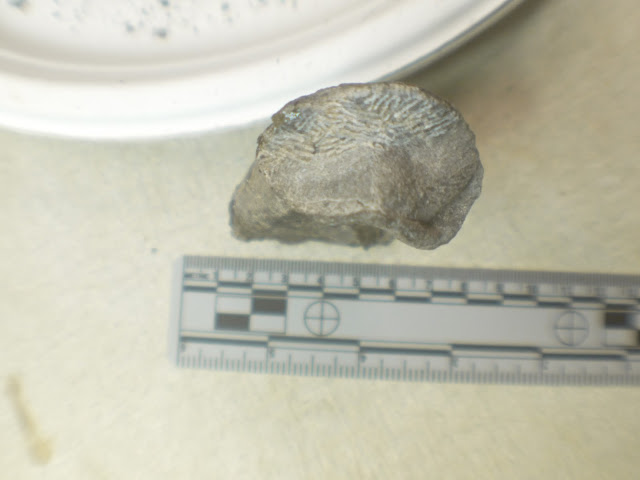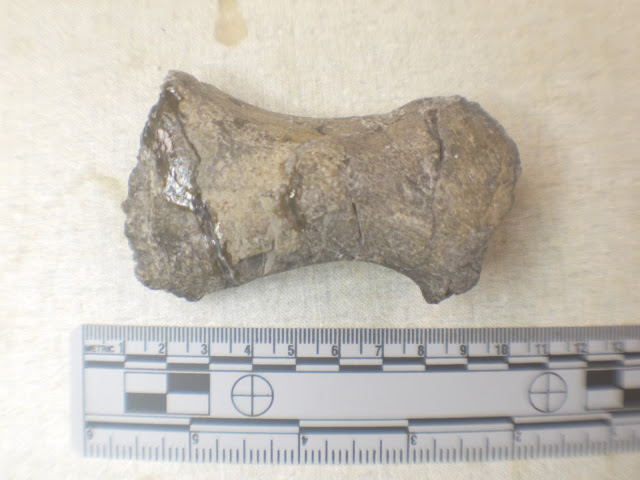In reptiles they still have a structural role. They lie between the skull proper and the jawbone. The jawbone (Mandible) pivots on the lower end of the quadrate. The upper end of the quadrate connects to projections out the back of the skull. These thalattosaur quadrates are unusually large as seen in this selection of some thalattosaurs and some other reptiles of the same era.
 Here we have three bones that all appear to be quadrates. One is quite worn, and although interesting it is so incomplete that it doesn't tell us much about the thalattosaur quadrate.
Here we have three bones that all appear to be quadrates. One is quite worn, and although interesting it is so incomplete that it doesn't tell us much about the thalattosaur quadrate.
However we now have two nice quadrates that are the same bone. Here is one in the rock, and one a 3D copy of one sent to Alaska.
As I write this, all three original bones have sent to Alaska. But I have printed out life-size copies of them. The one on the left is the worn one. The center one is very robust, and the right one is the newest, very gracile and delicate. The two bones are almost the same length. One is 16.6cm, the other more robust is 17.6 cm. This is only a 5% difference. By a strict scaleup, the larger one should be 117% of the volume of the smaller one. However, since we have the 3D scan, we can accurately know the larger, more robust bone actually is 300% of the mass of the smaller one. In short, it actually is much more robust while being almost the same size.
So we have two bones, essentially the same size, very different in strength and robustness. What this means I leave for other experts. I would suggest it is a growth difference - the graceful bone is from a younger animal, the robust bone from an older animal with much stronger bite and skull bones. Perhaps the skull grows quickly to a large graceful form which thickens and becomes much stronger as the animal ages.
As an option, it could be a sexual dimorphism - Females tend to be larger than males in reptiles. This is less likely in my humble opinion.
So enjoy and ponder - did thalattosaurs have tall gangly teenagers that grew into strong, robust adults?
Sincerely, Greg Carr




















































